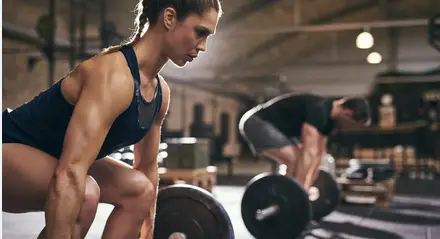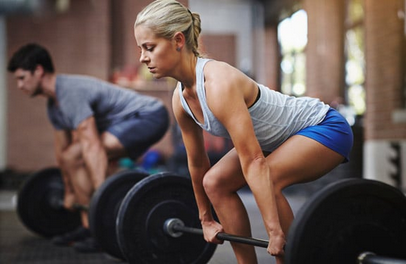Boost strength with these HIIT upper body exercises. Learn the best moves to build muscle, improve endurance, and tone your arms, shoulders, and chest with expert tips and effective techniques.
How HIIT Improves Endurance, Strength, and Fat Loss
High-intensity interval Training (HIIT) has rapidly gained popularity as one of the most effective workout strategies for those looking to maximize fitness gains in a short period. With its combination of intense bursts of exercise followed by short recovery periods, HIIT offers an optimal approach for improving endurance, building strength, and burning fat. But how exactly does this training method work to benefit these three key fitness goals?
Understanding HIIT and Its Impact on Fitness

HIIT involves alternating between short periods of intense activity, typically lasting 20 to 40 seconds and brief recovery intervals. These high-intensity bursts push the body to perform at near maximum effort, stimulating significant changes in both the cardiovascular system and muscle fibers. The beauty of HIIT lies in its versatility—exercises range from bodyweight movements like burpees and mountain climbers to weightlifting or cycling. It is this variability and intensity that delivers impressive results across multiple fitness domains.
Boosting Endurance Through HIIT
When it comes to improving endurance, HIIT works on both the aerobic and anaerobic systems, creating a well-rounded cardiovascular workout. Traditionally, endurance is built through long-duration, steady-state cardio, but HIIT offers a more efficient approach.
Cardiovascular Adaptations: The intense bursts during HIIT push the heart rate into the anaerobic zone, which strengthens the heart and increases the body’s ability to deliver oxygen to working muscles. Over time, this leads to improved cardiovascular health, better blood flow, and more efficient oxygen usage during activity. As a result, HIIT enhances your ability to sustain high-intensity efforts for longer periods, directly improving your endurance.
VO2 Max Increase: One of the most significant benefits of HIIT is the improvement in VO2 max—the maximum amount of oxygen your body can use during exercise. Studies show that HIIT can increase VO2 max to a greater extent than traditional moderate-intensity training. This is critical for overall endurance, as higher VO2 max allows the body to perform better in endurance activities, such as running, cycling, or swimming.
Mitochondrial Density: The high intensity of HIIT stimulates the growth of mitochondria within muscle cells, which are responsible for energy production. More mitochondria means the body can generate energy more efficiently, which further enhances endurance performance and delays fatigue during prolonged efforts.
Building Strength Through HIIT

While HIIT is often associated with cardiovascular benefits, it also plays a crucial role in enhancing muscle strength, particularly when strength-based exercises are incorporated into the intervals.
Muscle Fiber Activation: During the high-intensity intervals, muscles are pushed to their limits. Whether you’re performing bodyweight exercises like push-ups or using weights for exercises like kettlebell swings or squats, the muscles undergo significant stress. This stress activates fast-twitch muscle fibers, which are responsible for explosive strength. Over time, this leads to muscle hypertrophy (growth), especially when combined with progressive overload.
Functional Strength Development: Unlike traditional bodybuilding, which isolates specific muscles, HIIT often involves compound movements that engage multiple muscle groups simultaneously. For example, exercises like squat presses or thrusters require coordination between the legs, core, and upper body, leading to functional strength that translates into better overall physical performance.
Improved Muscular Endurance: In addition to building raw strength, HIIT also enhances muscular endurance. By repeatedly performing high-intensity movements with minimal rest, muscles learn to endure longer periods of exertion without tiring. This is beneficial not just for athletic performance but for everyday activities as well.
Accelerating Fat Loss with HIIT
Perhaps one of the most popular reasons people turn to HIIT is its ability to effectively burn fat. HIIT is incredibly efficient at torching calories in a short period, making it ideal for those looking to lose weight or lean out.
Increased Afterburn Effect (EPOC): After a HIIT workout, the body continues to burn calories at an elevated rate due to excess post-exercise oxygen consumption (EPOC), also known as the “afterburn effect.” This means that even after you’ve finished your workout, your body is still burning fat and calories for hours—sometimes up to 24 hours—after the session.
Fat Oxidation: HIIT stimulates the body’s ability to burn fat as fuel. Research shows that HIIT promotes fat oxidation, meaning your body will rely more on fat stores for energy during and after the workout, rather than carbohydrates. This can lead to significant reductions in body fat, especially when combined with proper nutrition.
Efficiency for Time-Constrained Schedules: One of the main reasons HIIT is so effective for fat loss is its time efficiency. Because the intensity is so high, you don’t need to spend hours in the gym to see results. A 20-30-minute HIIT session can burn as many calories as a much longer moderate-intensity workout, making it a perfect choice for people with busy schedules.
Preserving Lean Muscle Mass: Unlike steady-state cardio, which can sometimes lead to muscle loss along with fat loss, HIIT helps preserve lean muscle mass while promoting fat burning. The combination of intense intervals and muscle activation helps keep muscle tissue intact, ensuring that most of the weight lost comes from fat rather than muscle.
The Holistic Benefits of HIIT for Overall Fitness
While HIIT is renowned for its effects on endurance, strength, and fat loss, the benefits extend beyond these three areas, offering a holistic approach to fitness.
Improved Insulin Sensitivity: HIIT has been shown to improve insulin sensitivity, meaning the body can use glucose more efficiently. This is crucial for managing blood sugar levels and reducing the risk of Type 2 diabetes.
Increased Metabolic Rate: Regular HIIT workouts help elevate your basal metabolic rate (BMR), meaning your body will burn more calories at rest. This long-term metabolic boost makes it easier to maintain a healthy weight and continue to see fat loss results.
Time Efficiency: One of the standout features of HIIT is its time efficiency. Busy schedules often make it difficult for people to find the time to train, but with HIIT, 20-30-minute sessions can be just as effective as longer moderate-intensity workouts. This makes it an excellent option for those with time constraints.
Mental Toughness and Discipline: The nature of HIIT requires focus and perseverance. Overcoming the challenge of pushing through high-intensity intervals helps build mental toughness and discipline. As a result, people often find they can handle greater physical and mental stress, both in workouts and in daily life.
Conclusion: The Power of HIIT for Comprehensive Fitness
HIIT has proven itself as one of the most powerful and efficient ways to enhance endurance, build strength, and burn fat. Through its combination of intense bursts and short recovery periods, HIIT stimulates numerous physiological adaptations, from cardiovascular improvements to muscle fiber activation and fat oxidation. Whether you’re an athlete looking to improve performance or someone seeking a more effective fat-loss method, HIIT can deliver comprehensive fitness benefits. With its time efficiency and diverse exercise options, HIIT is an invaluable tool in any fitness journey, helping you achieve greater health, strength, and endurance in less time.
FAQ
What are the best HIIT upper body exercises for building strength?
Some of the best HIIT upper body exercises for strength include push-ups, dumbbell shoulder presses, tricep dips, burpees, and renegade rows. These target multiple muscle groups for maximum impact.
How does HIIT help improve upper body strength?
HIIT improves upper body strength by engaging multiple muscle groups through high-intensity exercises that promote muscle activation, endurance, and hypertrophy.
Can I use bodyweight exercises in HIIT for upper body strength?
Yes, bodyweight exercises like push-ups, plank-to-push-ups, and mountain climbers are excellent for building upper body strength during HIIT sessions.
How often should I do HIIT upper body exercises to see noticeable strength gains?
To see noticeable strength gains, aim for 2-3 HIIT upper body workouts per week, allowing time for recovery between sessions.
What is the role of compound exercises in HIIT upper body workouts?
Compound exercises like burpees, squat presses, and renegade rows are essential in HIIT upper body workouts as they target multiple muscle groups, enhancing overall strength.
Are HIIT upper body exercises effective for building both strength and endurance?
Yes, HIIT upper body exercises are effective for both building strength and improving muscular endurance by incorporating both explosive movements and sustained effort.
How can I modify HIIT upper body exercises for beginners?
Beginners can modify HIIT upper body exercises by reducing the intensity, using lighter weights, or performing exercises with a slower tempo to build strength progressively.
What is the best HIIT upper body exercise for targeting the shoulders?
Dumbbell shoulder presses and shoulder taps are highly effective for targeting the shoulders during HIIT workouts, helping build strength and muscle definition.




